Realism and immersion is achieved via a multi dimensional sensory delivery system; a 5 speaker audio system provides the recreation of the aircraft and environment sounds and full motion of the entire simulator is achieved using the D-BOX haptic technology for accurate recreation of movement. With up to 2s of force over 3 types of intelligent movement, subtle pitch, roll and heave, providing Kinaesthetic Cues to build operators psychomotor reflexes, stimulating operator muscle memory, developing reflexes and preparing them for real life flight.
Visuals are provided by an immersive triple 50 inch wraparound display giving the user a wraparound visual environment.
Helicopter Collective - the collective Pro gives rotor wing pilots the most accurate flight simulation experience with a twist grip throttle and controls inspired by the Ka-50 Black Shark helicopter
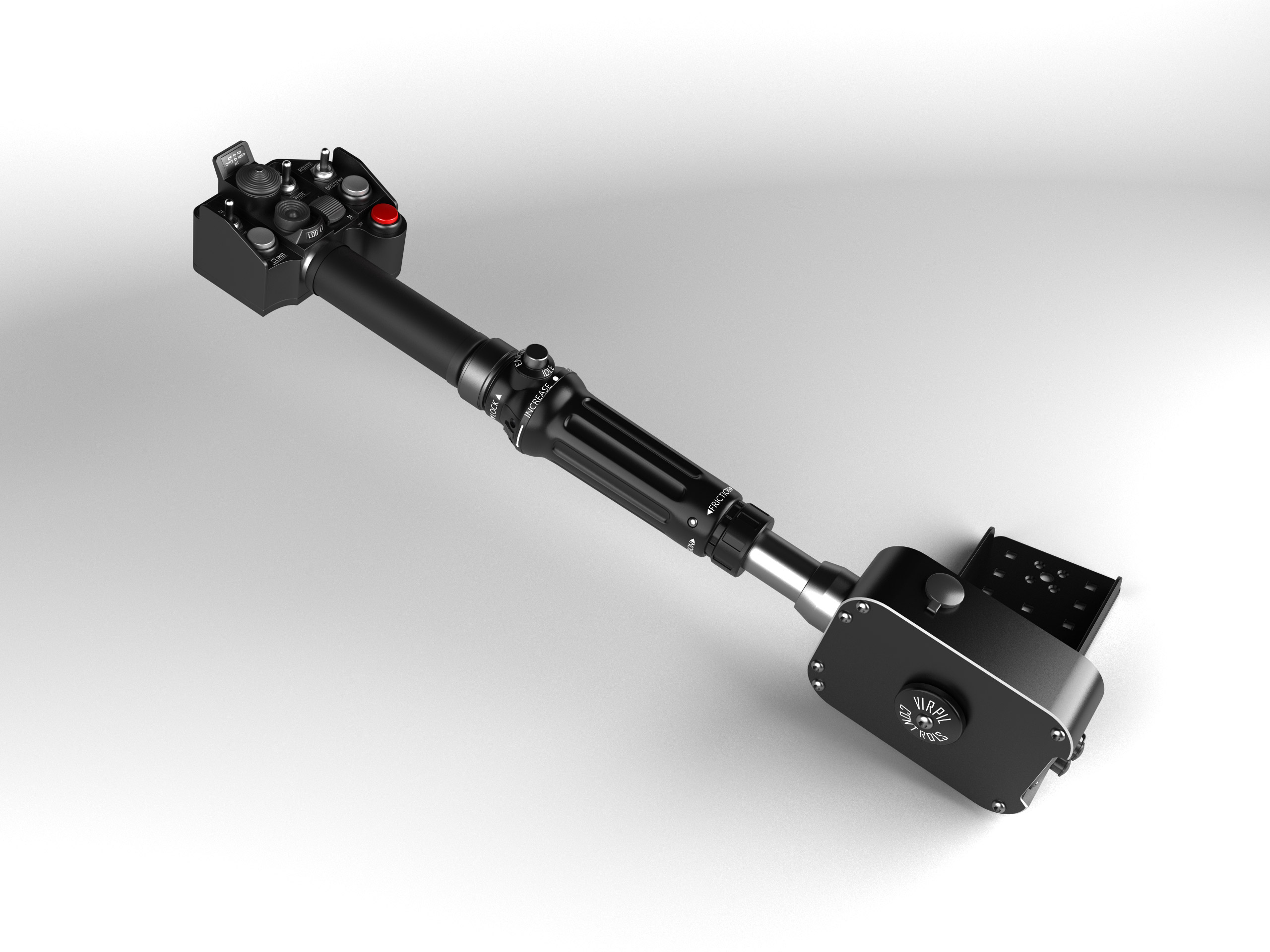 Helicopter Cyclic Joystick
Helicopter Cyclic Joystick - Control Stick Pro - Professional helicopter configuration flight stick with extended length shaft. Features an extensive set of controls to allow it work with various aircraft types. Features :
- 1 x Dual-Stage Trigger
- 1 x Dual-Position Flip Trigger (tactile switch trigger + button input for UP position)
- Combination Trigger Stages - flip trigger and dual stage trigger and be pressed simultaneously as a combined trigger for additional trigger stages
- 1 x Analogue Stick (+ Push)
- 3 x 4-way Hats (+ Push)
- 1 x 2-way Hat (+ Push)
- 3 x Momentary buttons
- 1 x Brake lever (VPC Contactless Sensor) + Momentary button
- 1 x Scroll Encoder (+ Dual Push)
- Lockable Twist Axis (VPC Contactless Sensor)
- Adjustable Hand Rest
- Metal Flip Trigger and Brake Lever
- Translucent hood with programmable RGB lighting
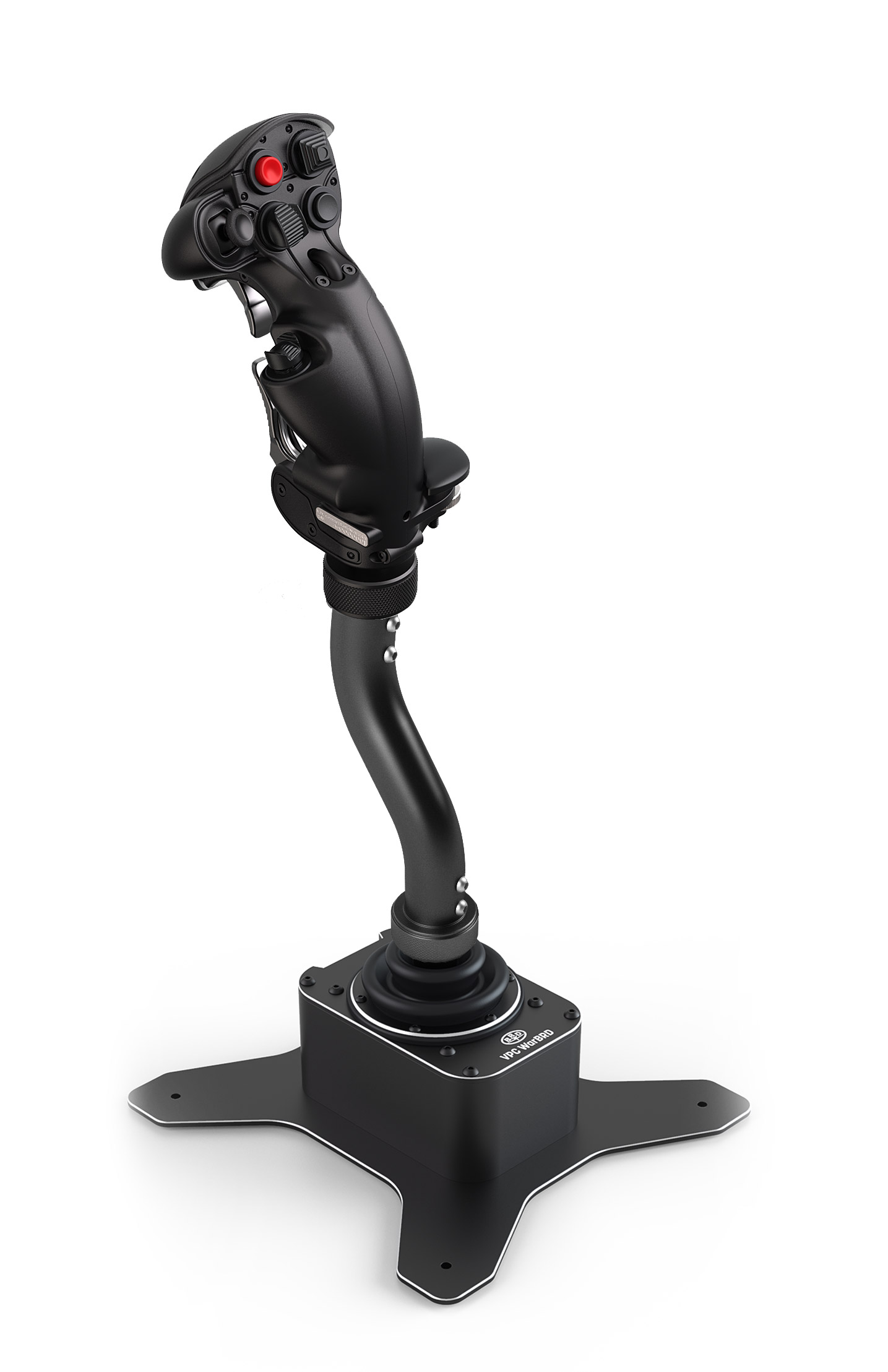
Dual Setup 23 Inch Touch Panel Display - 2 x 23 Inch Widescreen touchscreen LCD monitors to display cockpit information and dials.
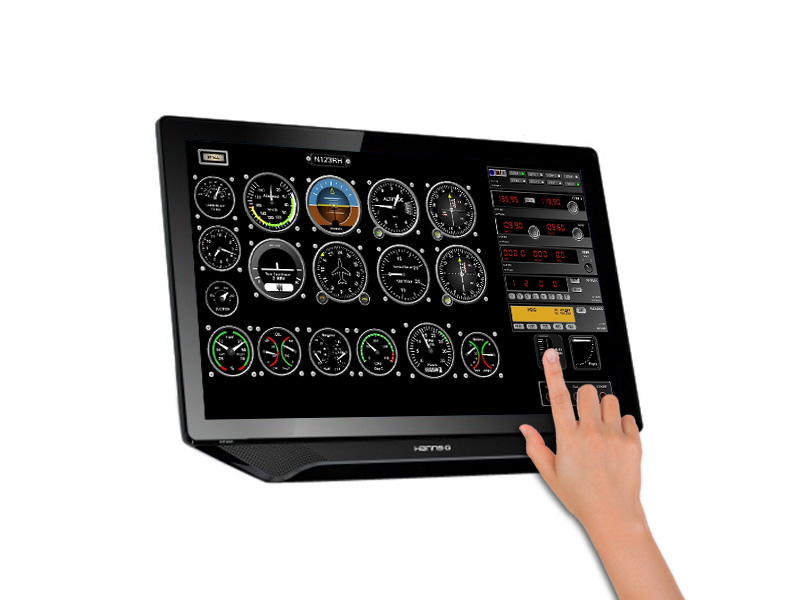
RADIO PANEL LED displays Autopilot display works in real time, removing the need to use fiddly on screen controls. A set of switches and LED displays for use in controlling various aspects of flight simulation : COM1 / COM2 / NAV1 / NAV2 function / DME / ADF / XPDR functions
Standby switch - set your standby frequencies and then set to active at the touch of a button.
Twin concentric adjustment dials adjust frequency units incrementally for quicker selection of your required frequency.
Multiple Radio Panels will allow simultaneous display of the various radio stack functions (optional add-ons)
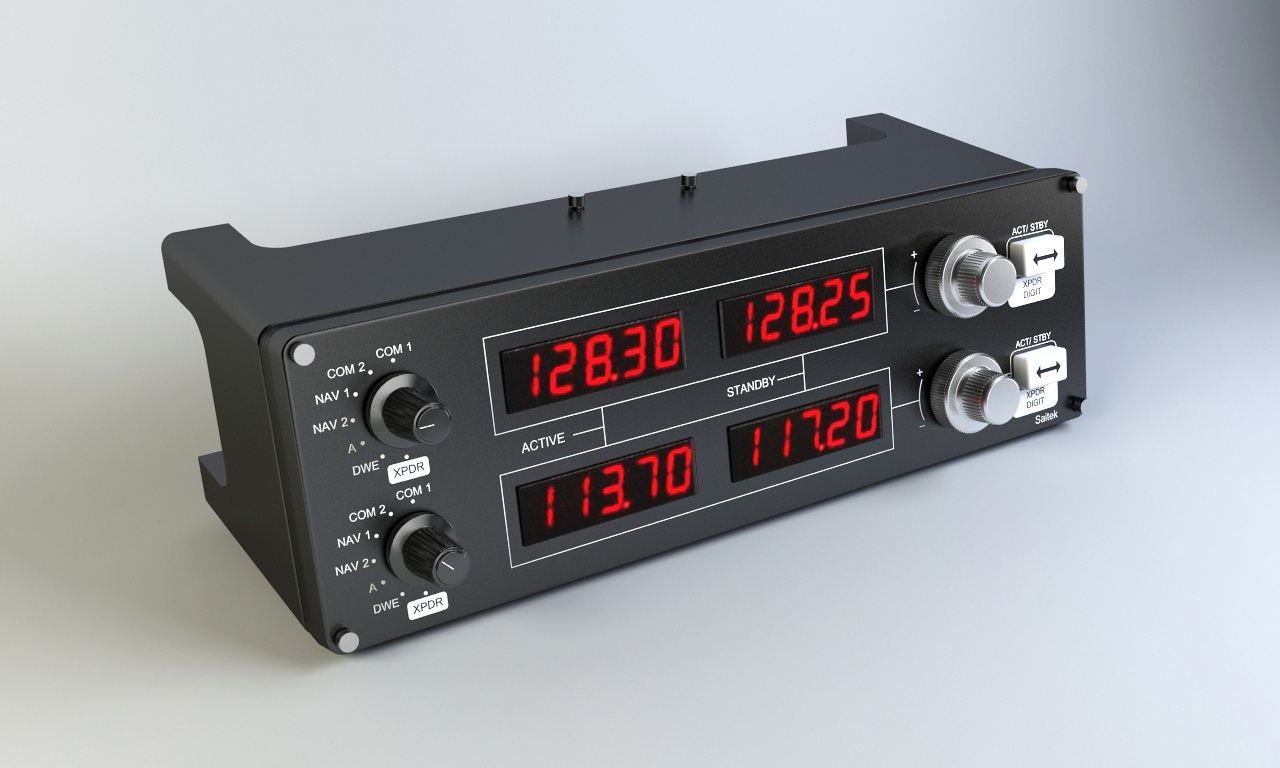
MULTI PANEL A set of switches and LED display for use in controlling various aspects of flight simulation
Use the dial to adjust frequency units incrementally for quicker selection of your required frequency
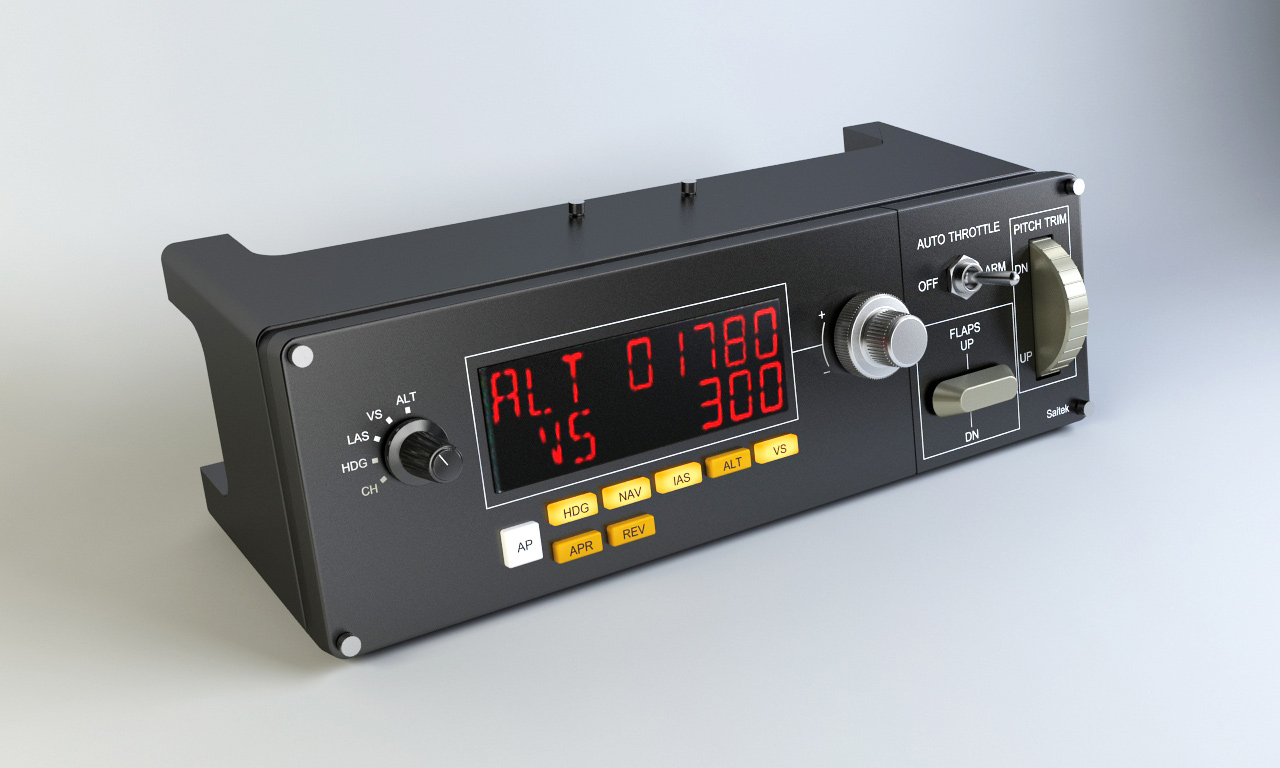
FLIGHT SWITCH PANEL Control your landing gear, engine power, landing lights and 11 other important aircraft functions from one compact unit. Realistic landing gear control with LEDs indicating actual gear status. Start your aircraft engines and access other cockpit functions with ease
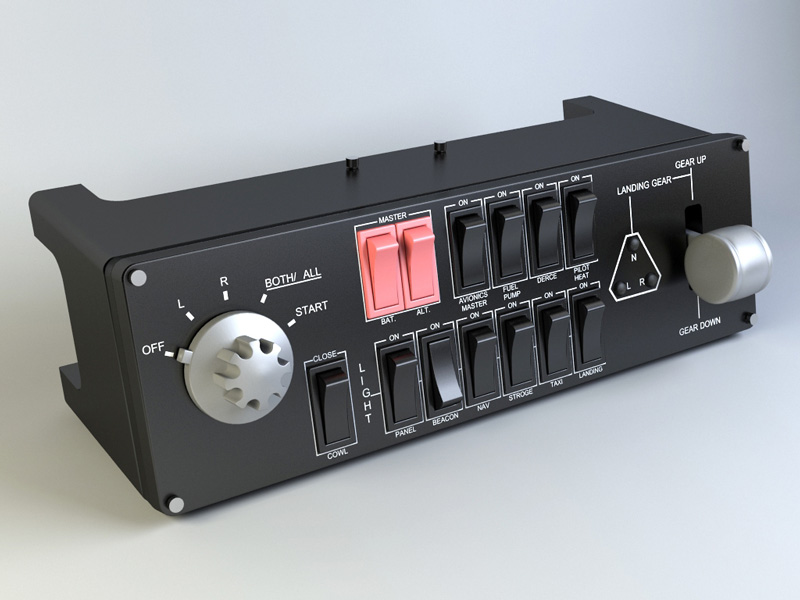
1.5 Inch travel 4 actuator D-BOX motion technology for accurate recreation of movement with up to 2s of force over 3 types of intelligent movement, subtle pitch, roll and heave, providing Kinesthetic Cues to build operators psychomotor reflexes, stimulating operator muscle memory, developing reflexes and preparing them for real life flight.
Cutting edge Vesaro Technology Combined with FAA approved training software X-Plane.
X-Plane contains subsonic and supersonic flight dynamics, allowing users to predict the flight characteristics of the slowest aircraft or the fastest.
The full X Plane scenery package covers the Earth in stunning resolution from 74 north to 60 south latitude. Users can land at any of over 33,000 airports or test their mettle on aircraft carriers, oil rigs, frigates (which pitch and roll with the waves), or helipads atop buildings. They can also realistically model the flight of remote-controlled model aircraft, perform an air-launch in an X15 or Space Ship One from the mother ship, fly re-entries into Earths atmosphere in the Space Shuttle, fly with friends over the Internet or a LAN, drop water on forest fires, or shoot approaches to aircraft carriers at night in stormy weather and rough water conditions in a damaged Fâ€"4. The situations that can be simulated are unbelievably diverse!
Weather in X Plane is variable from clear skies and high visibility to thunderstorms with controllable wind, wind shear, turbulence, and micro bursts. Rain, snow, and clouds are available for an instrument flying challenge, and thermals are available for the gliders. Actual weather conditions can be downloaded from the Internet, allowing users to fly in the weather that really exists at their current location!
X Plane has detailed failure modelling, with multitudes of systems that can either be failed manually at an instructors command, or randomly when users least expect it! Users can fail instruments, engines, flight controls, control cables, antennae, landing gear, or any of dozens of other systems at any moment. They can also have a friend or flight instructor (locally or via the Internet, working from an Instructors Operating Station) fail components on the aircraft without the pilots knowledge. The instructor can alter the time of day, weather conditions, and failure status of hundreds of aircraft systems and components. Additionally, the instructor can relocate the aircraft to a location of his or her choice at any time.
Aircraft models are also extremely flexible, allowing users to easily create paint jobs, sounds, and instrument panels to modify any airplane you choose. Custom airplane or helicopter designs can even be created and flown using X Plane and the included Plane Maker software.
X Plane is used by world-leading defence contractors, air forces, aircraft manufacturers, and even space agencies for applications ranging from flight training to concept design and flight testing.
For example, X Plane has been used in crash investigations to depict the view pilots experienced moments before a mid-air collision, or to graphically present to juries and judges the forces that impact an aircraft in flight. Scaled Composites used X Plane to visualize Space Ship Ons flights to the edge of the atmosphere in their pilot training simulator. Kalitta has used X Plane to train their pilots to fly freight 747s in the middle of the night. Northwest and Japan Airlines use X Plane for flight review and training. Cessna uses X Plane to train new customers in the intricacies of the Garmin G1000. Dave Rose has used X Plane to optimize airplanes for his many wins at Reno. NASA has used X Plane to test the re-entry of gliders into the Martian atmosphere, and the list goes on. These customers serve as perhaps the most significant endorsement of the incredible capabilities of this simulator.
Furthermore, X Plane has received certification from the FAA for use in logging hours towards flight experience and ratings. This experience can provide credit towards a private pilots license, recurrence training, hours towards instrument training, and even hours towards an Airline Transport Certificates that good.
Engineers at Velocity, NASA, Scaled Composites, and Carter Aviation have all used X Plane to do design, evaluation, and simulated flight testing. The National Test pilot school uses X Plane to train pilots in non-conventional aircraft and flight-control systems.
Introducing the Vesaro C.O.T.S training system for Home Enthusiast, Military and Commercial training. The C.O.T.S (Commercial Of The Shelf) approach is revolutionizing training within organisations and professional training schools around the world by providing off the shelf solutions using customizable modular components and integrating this technology with FAA approved simulation software. With this approach we are able to provide simulation training systems at a fraction of the cost of common solutions. This forward thinking approach, one that is in tune with the current world economic climate, will allow you to install multiple training systems within budget resulting in simultaneous training of multiple trainees.
Students can gain a high level of the necessary skills required before progressing onto live flight or time on custom one off specialised simulators. This negates the need to waste precious simulator hours on your custom simulators where many of the hours can be clocked up on a C.O.T.S based systems.
Benefits of Motion for Simulation Training
Although most industries today recognize the training benefits of simulation, it can sometimes be hard to articulate why motion is essential.
Psychomotor Reflex Development
Benjamin Bloom's 1972 "Learning Domains Taxonomy has applications for motion based training and simulation learning equipments. The following elements contribute to the psycho-motor reflex development and stem from a simulator's motion cue.
- Perception - Using sensory cues to guide motor activities.
- Response - Learning a complex skill through imitation trial and error; following instructions.
- Mechanism - Learned responses become a habit, movements are performed with confidence and proficiency.
- Complex Overt Response - performing complex movement patterns.
- Adaptation - Movements can be modified or adapted to fit special situations.
Multimodal Training
Education and training theorists all agree that education needs to proceed from a complete set of modalities in order to ensure an effective transfer of the training curriculum from trainer to trainee.
In an efficient training simulator, the core simulation solution is built out and communicated to the trainee in four modes:
Visualization : The trainee is able to observe the action happening within the simulation and can orient himself/herself accordingly.
Sound : Stereo or surround audio cues provide a tangible context that immerses trainees and more effectively familiarizes them with equipment- and environment-specific sounds.
Instructions : Clarity, subject-matter expertise, and highly detailed training objectives are essential for effective knowledge transfer. While technology is an essential medium for this knowledge transfer, it is also key to focus on curriculum definition and the clarity of the instructions given to the trainees.
Motion : Operators need to "feel" to memorize. Studies show that multimodal training improves results across a variety of subject areas. Instruction that is founded on auditory and visual learning as well as the kinesthetic domain is the best way to achieve learning success.
Simulator Verification and Validation
Per the definition used by the US Modelling and Simulation Coordination Office (M&SCO), verification and validation is essential in the simulator development and deployment process in order to avoid negative training.
As stated in the VV&A (verification, validation and accreditation) manual, to determine whether a model or simulation or federation should be used in a given situation, its credibility must be established by evaluating its fitness for the intended use.
Credibility is established by evaluating the simulations capabilities, accuracy, correctness, and usability relative to its intended use.
Credibility depends on the following simulation characteristics:
- Capability, Not in an absolute sense, but relative to the capabilities needed for the specified application.
- Accuracy, Not in an absolute sense, but relative to the accuracy necessary for the intended use
- Correctness, The level of confidence that the simulation's data and algorithms are sound, robust, and properly implemented, and that the accuracy of the simulation results will not substantially and unexpectedly deviate from the expected degree of accuracy.
- Usability, Factors related to the use of the simulation, such as the training and experience of those who operate it, the quality and appropriateness of the data used in its application, and the configuration control procedures applied to it.
(source : Modelling and Simulation Coordination Office (M&SCO))
Many elements of credibility can be gauged simply by observing the visualization output of a simulator, but it is only by seating in the trainee seat that a simulation expert will be able to assess the correctness and accuracy of the virtual equipment.
Maximal Trainee Engagement
The best training solution is the one that maximizes trainee engagement. Most operators are multimodal trainees, they learn better when they see, hear, and feel during their training. In addition, they are more deeply engaged when they "feel" the "real thing." Static desktop training applications are at one remove from dynamic solutions that appeal to these learning traits.
In Technical Report 1176 by Michael E. McCauley in 2006 for the Research Institute for the Behavioural and Social Sciences, a number of striking conclusions shed new light on what constitutes optimal motion for pilot training :
- "Contrary to the opinion of many simulator engineers and operational personnel (...) there is no certainty that the price of a simulator is related to the training benefits received.
- "Adding a limited amount of motion is highly likely to make a simulator more preferable to pilots.
- The report recommend to implement limited motion in order to gain the following benefits:
- Provide event cues (e.g., landing bump, effective translational lift).
- Avoid the fixed-base doldrums.
- Increase pilot acceptance of the simulator.
Optimal Motion Simulation Solution for Military Aircraft and Land Forces
Interoperable - Deployable - COTS
Allowing virtual training teams to simply integrate existing or upcoming simulators with an efficient and adapted motion solution, the system empowers trainers to stimulate operators muscle memory, creating reflexes and increasing mission critical readiness on the field.
solutions are :
- Interoperable - the vision and history have always driven us to ensure that motion integration in a larger technology architecture is simple. In the training and simulation community we recognize the value of open APIs and use of communication standards. This ensures that in addition to the services we provide to our customers, D-BOX motion solutions are natively interoperable.
- Deployable - In many cases, training is moving from the "training center" to locations in the field and close to the operational terrain. Ruggedized and containerized solution are becoming the norm for many operational logistic and readiness considerations: Today, even training can easily be deployed on-site. The D-BOX motion solution is a game changer when it comes to installation footprint, electrical power requirements, shipment weight, and installation time. Many of our customers have already successfully deployed entire motion-based training solutions in containers or shipped solutions.
- COTS - This means that your TCO (total cost of ownership) of the solution is as low as you can get. By using a solution that is supported, documented, and reputable, you de-risk your programs. In addition despite the temptation to create dedicated solutions per type of application your time-to-market is accelerated thanks to its plug-and-play attributes. We have also put our expertise on full display in our latest set of products, which give users access to motion code, behavioural subtlety, and vibrations that no other solution can match in finesse.